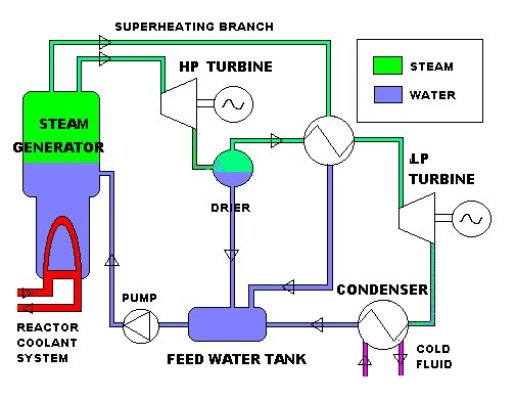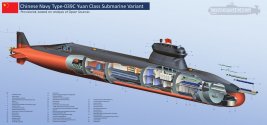1. Sure, you can think of it as a SSK with nuclear endurance and speed closer to SSN than SSK. The cost will be certainly much lower than SSN if not simply for the weapon, tonnage, and crew size. The only question is how much cheaper.
2. It was literally claimed on the slide to be comparable noise to conventional. Yes it is steathier. See page 1.
3. It is not directly stated, but it makes logical sense a cheap powerful platform in high demand will have high number.
Again, it is not a nuclear attack sub, it dont carry VLS. I made it very clear in previous post. But the fact these "nuclear-like SSK" will help China own the ocean means 'proper nuclear sub' can be freed to do its job in less quantity.
Who knows, maybe this kind of submarine will redefine definition of nuclear attack sub, if it turn out to be the most popular type. We may retroactively rename classic version to "nuclear guided missile attack sub" or something.
No.
1. The speed of this "mini-nuke" will be higher than a SSK, but not comparable to a true SSN. Furthermore, as I said you have no right to compare the cost between this "mini-nuke" and a proper SSN because a proper SSN has much greater crew facilities and stores for endurance, much greater weapons and sensor loads.
2. Having comparable noise to a conventional submarine does not mean it is stealthier than a modern nuclear submarine, especially if it is under equivalent operational environments and speed demands.
3. Again, that's not logical. That is like saying that we should expect the PLA to have procured more J-10s throughout than Flanker family aircraft through its lifetime because the J-10 is smaller, single engined and logically cheaper, however the scale of procurement entirely depends on the actual fleet/service requirements.
For the PLAN, a large fleet of "mini-nukes" would be appropriate if the PLAN were focused mostly on missions in the 1st island chain, with a degree of venturing out to 2nd island chain, but unable to properly compete in the 2nd island chain or beyond.
However, as we can see from the Bohai expansion, we can see that they intend to have significant capacity to build a large number of proper sized nuclear submarines, with the sort of high end blue water capability that offers.
The final fleet composition is yet to be determined, so it is very much early days, but it is certainly far too early and overly excitable to suggest that such a "mini-nuke" could perform the role of proper nuclear submarines in an "exponentially better" way.
If you want to say "Again, it is not a nuclear attack sub, it dont carry VLS. I made it very clear in previous post. But the fact these "nuclear-like SSK" will help China own the ocean means 'proper nuclear sub' can be freed to do its job in less quantity." -- that is fine, then you are conceding that this "mini-nuke" is not and will not take on the role that proper nuclear submarines do.
In which case, you are agreeing that the "mini nuke" will
not be able to do the role of proper nuclear submarines "exponentially better" but that they are instead different in role and capability profile.
Edit, to make it clear for everyone, the "mini nuke" (if it is real) will almost certainly be vastly inferior to a proper nuclear submarine in terms of:
- speed (both maximum/transit speed, and tactical speed)
- sensor capability and processing
- weapons load and variety (both underwater as well as VLS; the "mini-nuke is unlikely to have VLS anyhow)
- onboard/perishable endurance (which is determined by crew facilities and stores of consumables on the boat)
What this means is that the "mini-nuke" will be vastly outcompeted in the open ocean and at greater distances from home ports, by proper nuclear submarines, as well as much more vulnerable to enemy ASW forces (surface ships as well as MPAs and helicopters) in said open oceans/long distances from home as well.
What the "mini-nuke" can offer is a SSK-esque capability profile, but with greater endurance and slightly better speed, meaning they can do better in the short range and more littoral and green water environments, but to at proper blue water, open ocean distances they would be vastly inferior to a proper nuclear submarine, and if they are applied for that mission profile it would be due to not having other appropriate proper nuclear submarines available.




